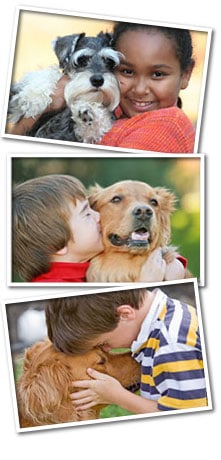Holidays are upon us, and many will get carried away by the seasonal activities and atmosphere. Before we make sure to consider the belt and the budget, we need to consider how to prepare for our four-legged friend.
Dog-Safe Decor
Tinsel may not be toxic, but it’s tiny, thin, and easily swallowed. Once eaten, it can get trapped in the intestinal tract and require veterinary care.
Lights and other electrical Christmas decorations are dangers for furry family members who like to chew on things. Light strings and extension cords may look like a tasty rope chew toy, so make sure all lights use three-prong extension cords for safety and monitor any areas accessible to dog-level curiosity and chewing.
Ornaments come in many shapes and sizes, but also materials: glass ornaments or other breakable items can be knocked down and get in mouths or paws, causing external and internal lacerations. Make sure fragile ornaments are hung out of reach and are secure against falling.
Speaking of falling, trees should be extra secured as dogs running into or under may knock it over, causing injury or worse. If it’s a real tree, the ASPCA reminds you to be sure whatever fertilizer water additives you might use in the tree stand are animal safe.
Animals and Ambiance
The decorations are up, and now it’s time to light some candles and seasonal-smelling potpourri, right? Wait a minute: consider how these additions might also impact animals.
Candles can add a flickering warmth to any holiday scene, but not only can your dog potentially burn themselves, they might knock if over and turn your home into a flaming Yuletide terror! Even hot dripping wax may burn those paws. You may consider battery-operated candles or ensure that any real candles are high or on wall sconces that safely catch waxy drips.
Potpourri kept anywhere your dog might lick can have two potentially hazardous implications. You might get away with facing some ill-advised licks that come away with chemical burns, but it might prove even worse: they may also get sick, facing a fever and poisoning. A non-toxic candle safely placed may be the better option for dog lovers.
Plant Versus Dog
Let’s consider that Christmas tree once more: even with a secure stand and safe water, a real tree’s pine needles might cause oral irritation or worse: vomiting and diarrhea. Other holiday plants often turn up at this time, so make sure a well-meant offering doesn’t offer toxic repercussions. All of these are dangerous to pets if ingested:
Poinsettias, Mistletoe, Holly, and Lilies. Silk or plastic plants are probably your best bet, although some real roses, marigolds, orchids, and daisies may be safe options as well.
Food Risks
Grapes, raisins, currants and other nuts turn up in holiday recipes that are harmful to dogs, leading to kidney failure. Whether it’s your turkey stuffing or a delectable dessert, they shouldn’t be fed to your furry friend or left within reach.
Turkey bones may splinter and cause digestive harm and havoc. The fatty trimmings also aren’t good for their system either. As much as your or family members may want to lower the leftovers or leave a greasy plate for licking, it’s safest to let your dog enjoy their own treats and steer clear of poultry offerings.
Chocolate is often in abundance in desserts served, stocking samplers, and wrapped gifts. Recipes call for cocoa, baking chocolate and more. Be extra careful and advise guests as just a few ounces can be toxic and call your vet (or the pet poison helpline) immediately if you suspect they’ve ingested it.
Dog-Clueless Houseguests
The Dog’s Room: Your four-legged friend might not be as extroverted as you, and the unusual amount of visitors may be very taxing. Knowing they have a retreat and a space of their own is very important.
Monitor Medications: In addition to food and other things guests might leave lying around, they may have daily medications they aren’t used to keeping safe from canine curiosity. People’s prescriptions could obviously have dangerous side effects so make sure pill cases and containers are in safe, secure areas.
For many, the holiday season means colder weather and winter conditions, snow and ice or sub-zero temperatures. Whether your dog simply needs a walk to do their duty or is facing an extended stay outside, make sure they’re equipped for cold-weather conditions, possibly including the following:
A garage stay versus outside if it’s too cold.
An outside shelter that is warm, dry and well insulated.
Towel dried when they’ve gotten wet outside.
Paw protection from frostbite, rock salt and other concerns.

